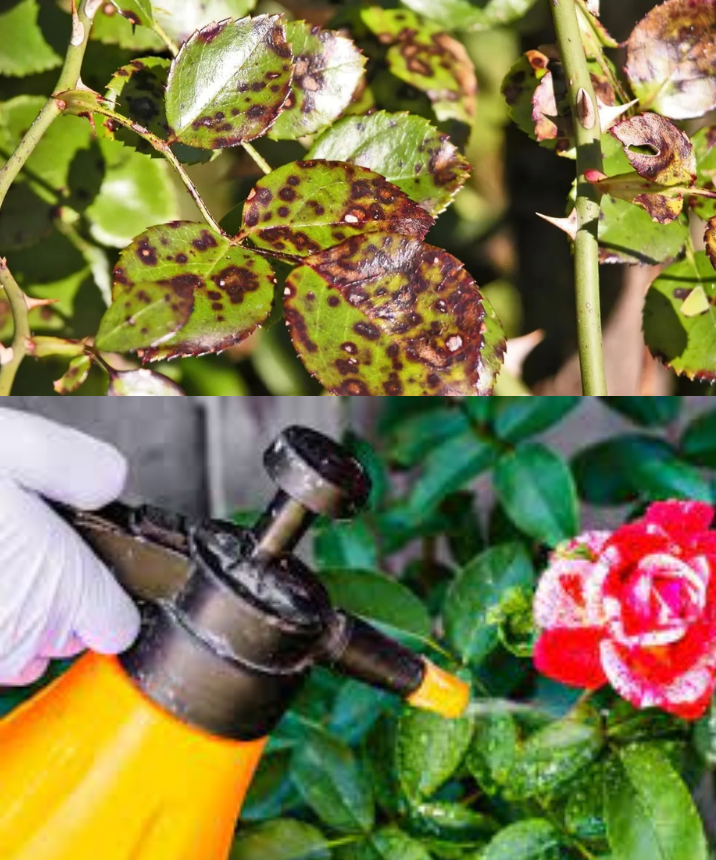Black spot disease on roses, caused by the fungus Diplocarpon rosae, is one of the most common problems faced by gardening enthusiasts. These spots detract from the beauty of the leaves and can weaken the plant if not properly treated. Fortunately, there are effective natural remedies to combat this disease. Here’s the best homemade spray for black spot on your roses, as well as additional natural treatments.
The Best Homemade Spray:
Ingredients:
- 1 liter of water
- 1 teaspoon of baking soda
- 1 teaspoon of liquid Castile soap
- 1 teaspoon of neem oil (optional)
Instructions:
- In a spray bottle, mix the water, baking soda, and liquid Castile soap.
- Vigorously shake the spray bottle to ensure the ingredients are well combined.
- If desired, add neem oil to the mixture. Neem oil is a natural insecticide that can help prevent fungal infections and repel harmful insects.
- Generously spray the mixture onto the leaves and stems of your roses, making sure to cover all areas affected by black spots.
- Repeat this treatment once a week or after each rainfall until the symptoms of the disease disappear.
Bonus: Additional Natural Treatments
In addition to the homemade spray, here are some other effective natural treatments to combat black spot on roses:
- Horsetail decoction: Boil fresh horsetail in water for about 30 minutes, then let it steep for a few hours. Strain the liquid and spray it onto your roses to strengthen their disease resistance.
- Garlic infusion: Boil some crushed garlic heads in water for about 20 minutes. Let it cool, strain, and spray it on the roses for its antifungal properties.
- Bay leaf infusion: Boil bay leaves in water for about 30 minutes, then let it steep for a few hours. Use this infusion as a spray to treat black spots on roses.
By using these natural remedies, you can effectively combat black spot disease on your roses while preserving the health of your plants and the environment. Be sure to be consistent in applying the treatments and monitor the progression of the disease for the best results.
